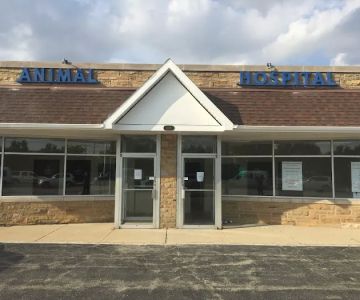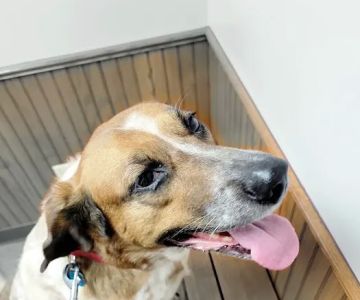What is a State Veterinarian and Their Role in Public Health
As an animal lover and someone who has always been interested in veterinary science, I found myself curious about the specific roles and responsibilities of state veterinarians. This led me to explore what it means to be a state veterinarian, and how they contribute to the welfare of both animals and the public. In this article, I will walk you through the crucial aspects of this profession, and why it’s so important for public health and safety.
1. What Does a State Veterinarian Do?
A state veterinarian is a licensed veterinary professional who works at the state level to manage and oversee animal health and disease control within their jurisdiction. These professionals play a vital role in ensuring the health of livestock, wildlife, and companion animals. They work closely with other governmental agencies, such as the Department of Health and the Centers for Disease Control and Prevention (CDC), to prevent the spread of infectious diseases that can affect both animals and humans. In addition, state veterinarians help develop and enforce policies that protect the public from zoonotic diseases, which are diseases that can be transmitted from animals to humans.
1.1 Animal Disease Control
One of the primary duties of state veterinarians is to oversee disease prevention and control within the state. For example, they are responsible for monitoring outbreaks of diseases such as avian influenza, rabies, and bovine tuberculosis. They work with farmers, ranchers, and wildlife officials to track the spread of diseases, and they coordinate the implementation of quarantine measures to prevent the spread to other animals and, in some cases, humans. A recent example was when a state veterinarian in California helped manage the outbreak of bird flu, ensuring the safety of both poultry farmers and the public.
2. The Role of State Veterinarians in Public Health
State veterinarians have an essential role in protecting the public from zoonotic diseases. Zoonotic diseases are responsible for several outbreaks throughout history, and state veterinarians work hard to prevent the spread of these diseases by monitoring animal populations and implementing preventive measures. Through regular vaccinations, inspections, and surveillance programs, state veterinarians help mitigate the risk of outbreaks that could affect humans. In fact, their work directly influences the health and safety of communities across the country.
2.1 Disease Surveillance and Prevention
State veterinarians collaborate with local health authorities and the CDC to monitor disease trends in both domestic and wild animals. Their ability to quickly identify potential threats helps prevent widespread outbreaks that could affect public health. For instance, when the West Nile virus was discovered in birds in certain states, state veterinarians played a key role in preventing it from reaching other animals or humans by enacting testing and quarantine measures.
2.2 Public Education and Awareness
Another important aspect of a state veterinarian’s role is educating the public about animal health and disease prevention. They work to inform farmers, pet owners, and wildlife enthusiasts about best practices for animal care and disease prevention. I recall an event where a state veterinarian hosted an educational seminar for pet owners to raise awareness about the importance of vaccinating their pets against rabies, a disease that is still a threat in certain parts of the country.
3. How to Become a State Veterinarian
Becoming a state veterinarian requires a significant amount of education and training. First and foremost, aspiring state veterinarians must earn a Doctor of Veterinary Medicine (DVM) degree from an accredited veterinary school. This typically takes four years of graduate education after obtaining a bachelor’s degree. In addition, state veterinarians must become licensed by passing the North American Veterinary Licensing Examination (NAVLE) and any other state-specific exams that may be required. Many state veterinarians also complete internships or residencies in public health or veterinary epidemiology to further specialize in this field.
3.1 Specializations and Training
While the basic educational requirements are standard, there are specialized areas of study within the field of veterinary public health that may be beneficial for state veterinarians. For example, those interested in working with zoonotic diseases may pursue additional training in veterinary epidemiology. This specialization helps veterinarians understand the complex relationships between animal and human health, allowing them to better manage and control outbreaks.
4. Challenges Faced by State Veterinarians
Working as a state veterinarian comes with its share of challenges. One of the biggest hurdles is managing outbreaks of diseases that may have widespread consequences for both animal and human populations. During the H1N1 flu outbreak, state veterinarians were faced with the challenge of keeping the animal population safe from the spread of the virus while also managing the public’s fear and response. Another challenge is securing funding for important disease control programs, especially in times of economic uncertainty when government budgets may be limited.
4.1 Balancing Animal Health and Public Health
Another challenge is balancing the needs of animal health with public health concerns. State veterinarians must navigate difficult situations where the health of animals conflicts with human safety. For instance, in cases where animals must be euthanized to prevent the spread of disease, veterinarians must make difficult decisions while balancing ethical considerations and public health concerns. These decisions often come with emotional and professional challenges, as the well-being of both animals and humans is at stake.
5. State Veterinarians in Emergency Response
State veterinarians also play an important role in emergency response efforts. Whether it’s dealing with natural disasters, such as hurricanes or wildfires, or responding to an outbreak of a contagious disease, state veterinarians are often on the front lines. I remember reading about a state veterinarian who helped coordinate the evacuation and care of animals after a hurricane, ensuring that displaced animals received proper medical attention and that disease outbreaks were prevented.
5.1 Disaster Preparedness and Animal Welfare
State veterinarians are also key players in disaster preparedness planning. They help develop and implement plans to ensure that animals are properly cared for during emergencies, including establishing temporary shelters and coordinating medical care for injured animals. Their work ensures that animals are not left behind during evacuations and that their health is closely monitored to prevent the spread of diseases in emergency shelters.











